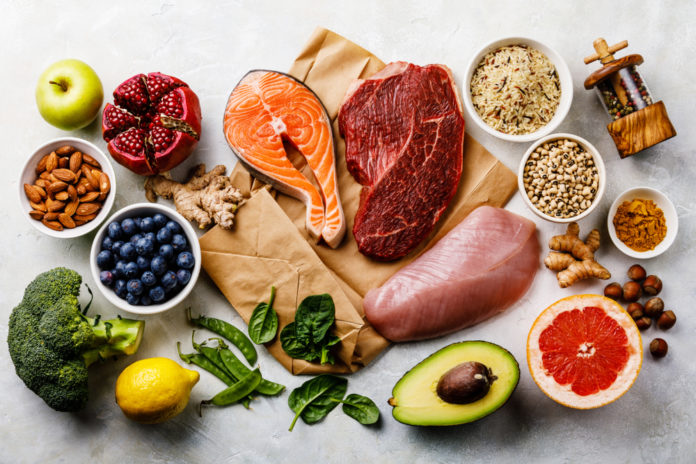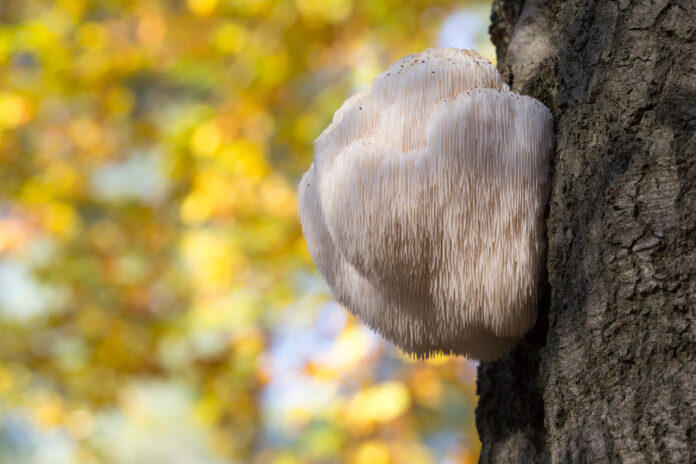Take a bite out of your dog’s food allergies with an elimination diet

If your dog is itching, scratching and has GI symptoms such as diarrhea, he may have a food allergy. An elimination diet is one of the best ways to get to the root of the problem.
When it comes to food allergies in our dogs, “no corn, no soy, no wheat, no yeast” is still the mantra that floats around in my head each time an email or text pops into my inbox. These four are still considered a few of the top food allergens in dogs, though truth be told, we could add to the list any and all foods our dogs eat. For example, while lamb and rice was once considered the hypoallergenic diet of choice, this is no longer the case. One excellent way of getting to the root of your dog’s allergies is with an elimination diet. It’s a challenging approach, but the results are well worth the effort.
The elimination diet – challenging but worth it
 Your ultimate goal is to determine the specific food/s that are causing problems for your dog, and an elimination diet is one way you can approach the issue. Starting an elimination diet can be daunting and requires a lot of commitment and patience. Every single person that comes into contact with your dog becomes part of the “experience”. Family members, visitors, and even your postman, if he happens to carry treats, have to be told that your dog is not to be given any food item other than those you have designated as “safe”. The slate has to be wiped clean.
Your ultimate goal is to determine the specific food/s that are causing problems for your dog, and an elimination diet is one way you can approach the issue. Starting an elimination diet can be daunting and requires a lot of commitment and patience. Every single person that comes into contact with your dog becomes part of the “experience”. Family members, visitors, and even your postman, if he happens to carry treats, have to be told that your dog is not to be given any food item other than those you have designated as “safe”. The slate has to be wiped clean.
This means you have to stop your current feeding program, including all those tasty tidbits from your dinner; supplements, including vitamins and minerals that may contain fillers that could cause an allergic reaction; all treats (no sneaking); and anything else that could be considered a food item, such as trachea chews and bully sticks. Even conventional medications need to be considered in your elimination plan. (Be sure to work with your veterinarian for guidance and advice.) You may feel you are taking on a monumental project, but the hard work is worth it when you realize you are helping your dog to a happier and healthier life.
Once you have made the decision to try an elimination diet, it is essential to stick to it for eight to 12 weeks. From this day forward, your dog becomes the subject of the next Netflix Original, because it is crucial to write down a script for everything you need to do, and everything happening right now, that could have a potential impact on your dog — from the daily weather report, to the areas you walk your dog, to the soaps you use, and so on. In other words, anything and everything. Pictures can be helpful too.
So what can I feed my dog?
Remember, an elimination diet means just that. The question is, what should you feed your dog now that you are bringing to a halt everything that was part of her regular feeding program? There are lots of things to consider, and a few special rules to follow, but there are many resources to turn to along with your veterinarian, to help guide and support you through the process of designing an elimination diet for your dog.
Tried and true elimination diet plans that are easy to follow can be found in Dr. Richard Pitcairn’s Complete Guide to Natural Health for Dogs and Cats, Dr. Donald Strombeck’s Home-Prepared Dog and Cat Diets: The Healthful Alternative, Dr. Martin Goldstein’s The Nature of Animal Healing, Dr. Shawn Messonnier’s The Allergy Solution for Dogs, Dr. Jean Dodds’ and Dr. Diana Laverdure’s Canine Nutrigenomics: The New Science of Feeding Your Dog for Optimum Health, and new on the shelves, Dr. Deva Khalsa’s The Allergic Pet: Holistic Solutions to End the Allergy Epidemic in our Dogs and Cats.
Basically, you have the job of selecting one protein source and one carbohydrate source that your dog has never been exposed to before. To do this, you will need to read every label on everything your dog has eaten, or may have eaten, and make a list in your journal so you can develop the script you want to follow. This gives you a place to begin.
Novel proteins and carbohydrates
Novel protein sources could include buffalo, duck, elk, emu, kangaroo, ostrich, rabbit and venison, though some of these are not so “novel” anymore.
Buffalo is an excellent protein choice for dogs that have allergies encompassing both skin-related issues and gastrointestinal problems. It is heart-healthy because it’s low in fat and cholesterol. Buffalo is a good source of vitamins B6 and B12, copper, iron, niacin, phosphorus, potassium, riboflavin, selenium and zinc, and also contains conjugated linoleic acid (CLA), recognized as a cancer preventive.
Kangaroo is another great source of novel high quality protein. It is a valuable source of vitamins and minerals, including vitamins B6 and B12, riboflavin, niacin, iron and zinc. Kangaroo also has heart-healthy long chain Omega-3 fatty acids and, like buffalo, contains the antioxidant CLA.
Ostrich is another novel protein to try. An interesting fact from the Canadian Ostrich Association is that ostrich has an ideal pH balance, so the meat does not attract bacteria such as E-coli and salmonella.
Novel carbohydrate sources could include anything from amaranth, buckwheat and sorghum to quinoa, teff and montina, as well as sweet potatoes, yams and butternut squash.
Carefully monitor your dog’s progress
If you’re lucky, your dog’s problems will begin to improve in a few weeks. As a result, you can be fairly certain there was something in his old diet that triggered her allergies. If fairly certain isn’t good enough for you, return to the beginning of your script and reintroduce the original feeding program. If symptoms reappear within seven to 14 days, you have confirmation of a food allergy. If you don’t want to be that adventurous, new foods can be added one at a time once your dog is doing well on the elimination diet, and you can then carefully monitor her for any adverse reactions. Don’t forget to write everything down as you move through the process.
When the time comes to reconsider adding supplements back into to your dog’s diet, take a look at whole fish body oil, evening primrose oil and borage oil — essential fatty acids that are known to have a positive impact on allergies. Consider adding some canned wild salmon or sardines, packed in water. If fish oils are a problem, there are great alternatives like hemp and chia.
An elimination diet takes a lot of commitment and patience, but by sticking with it, you’re taking big steps to ensuring a healthy happy dog who’s ready to take on the world with you by her side.
Recipes
Novel protein stir fry
Ingredients
1 pound ground protein of choice, e.g. elk, kangaroo, buffalo, ostrich
3 tablespoons first pressed/extra virgin olive oil
½ teaspoon sea salt
½ teaspoon turmeric or turmeric paste, made with ground turmeric root
Instructions
Choose organic ingredients whenever possible. Put olive oil in pan and turn heat to medium high. Add ground protein. Gently mix with the olive oil, add spices, and continue to stir. As soon as bubbles appear, turn heat down to simmer, and continue to stir until there is no pink in the meat. Cool and serve. Top with Kale Kocktail or serve alongside Kale Krunch. Note: this dish can also be served raw.
Kale kocktail or kale krunch
Ingredients
1 bunch kale
1 tablespoon first pressed/extra virgin olive oil or hemp oil
1 teaspoon sea salt
½ teaspoon turmeric powder or turmeric paste made from turmeric root (if making kale cocktail)
Instructions
Kale kocktail: Choose organic ingredients whenever possible. Whirl all ingredients in a food processor or blender and use as a topper on raw or cooked “novel” protein.
Kale krunch: Preheat oven to 350°F. Line a cookie sheet with parchment paper for easy clean-up. Remove the leaves from the thick outer stems of the kale. Cut or tear the leaves into big bite-sized pieces. Wash the leaves with filtered water, then dry them in a salad spinner or pat dry with a tea towel. Spread the kale pieces on the cookie sheet. Drizzle with oil and sprinkle with sea salt and turmeric. Bake for ten to 15 minutes, until the edges of the leaves are turning golden in color. Remove from the oven, cool and serve. Store in an open container, so the chips don’t lose their “crunch.” This is a treat that the whole family can enjoy.
Elimination diet treat recipe
Ingredients
2 cups novel protein, e.g. elk, kangaroo, ostrich
2½ cups organic whole flour (this could include paleo baking flour that is grain- and gluten-free)
¼ to ½ cup filtered water
Instructions
Preheat oven to 350°F. Cover a cookie sheet with parchment paper. Place the protein and water in a food processor or blender, and whirl until smooth. Begin with ¼ cup water, and add more as needed. Add flour a little at a time, until thoroughly blended.
Transfer dough to the cookie sheet. Flatten with a fork or the back of a spoon until the dough goes to the edges of the cookie sheet. Score with a sharp knife. Bake for 30 minutes, and then turn the oven down to 275°F. Bake for 1½ hours. Turn oven off and allow the biscuits to cool completely before storing them in an open contain or in the fridge. Biscuits should have a good crunch, and can be easily dehydrated too.



